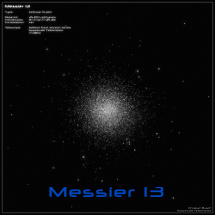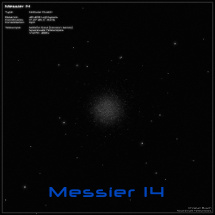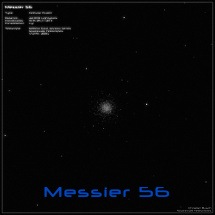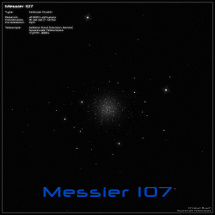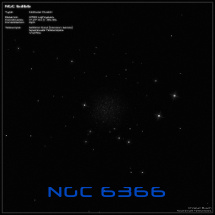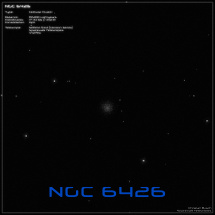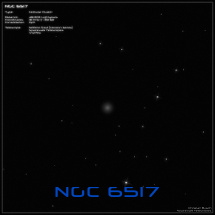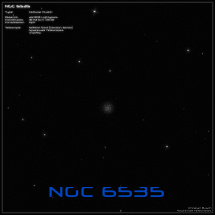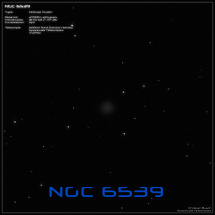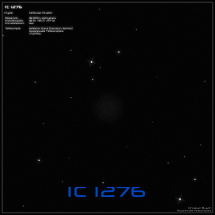
Globular clusters are collections of up to a million stars, which (as the name suggests) have a spherically symmetric pattern with
a diameter of up to 150 light-years.
The stellar density increases dramatically towards the center - in the innermost region one can find up to 10,000 stars in a volume of one
cubic parsec (3x3x3 light-years). So the individual stars are no longer light-years away, but only light-weeks. The sky on a hypothetical
planet at the center should be extremely impressive - even the daytime sky would be littered with hundreds of glistening bright stars. These
stars do not orbit around a specific center, but can move through the globular cluster in a wide variety of orbits. So they can not only perform
loops, but also fall directly in a "straight" line from the outskirts to the center. In the course of this, there are always very close encounters
of two stars. One of the two can reach such a high speed that it leaves the globular cluster. In this way the globular cluster loses more and
more stars and dissolves in a period of more than 10 billion years.
How globular clusters formed, is not clarified even today. Since the spherical objects differ significantly from elliptical dwarf galaxies,
it is assumed that this kind of star clusters formed together with their home galaxy. Areas with intense star formation are in focus as birthplace.
In most cases globular clusters are not located in the galactic disk, but in the galactic halo of a galaxy and often orbit it on strongly elliptical
paths. In the process, they can move several 100,000 light-years away from the center. The number of globular clusters in a galaxy is extremely
variable. Our own Milky Way has about 150 of them, the Andromeda galaxy about 500 and giant ellipses like Messier 87 or NGC 4889 can
contain up to 30,000 globular clusters.

